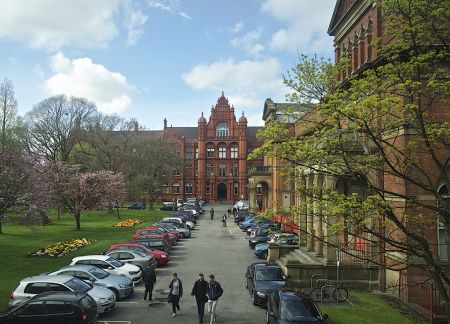
High seas could be protected by 'global treaty'
Thursday 4 April 2019
THERE are calls for at least 30% of international waters to form part of protected marine reserves to help save sea life from extinction.
Scientists are gravely concerned about the future of the high seas - areas of ocean outside national waters that cover more than two-fifths of the surface of the Earth.
They are home to an array of species, rivalling the variety found in coastal areas and on land, which are at risk from fishing, deep seabed mining, climate change and plastic pollution.
According to a new report by York, Oxford, Edinburgh and Salford universities, the key to securing their future could be a new global treaty that paves the way for the protection of waters that do not lie within any borders.
Greenpeace
The technical chapter of the report breaks down the global oceans into 100 kilometre squared units and maps the distribution of wildlife and habitats, such as sharks, whales and underwater mountains.It then uses a conservation planning tool called Marxan to suggest how best to protect the waters while minimising disruption to human activity.
Dr Katherine Yates, lecturer in global ecology and conservation at the University of Salford, said: “Our report highlights the importance of the ‘High Seas’ and demonstrates a feasible approach for planning for a network of marine protected areas.
“Hopefully it will spark a multitude of conversations all around the world and help build momentum for better high seas spatial conservation.”
Iconic wildlife
Professor Callum Roberts, marine conservation biologist at the University of York, said: "The speed at which the high seas have been depleted of some of their most spectacular and iconic wildlife has taken the world by surprise.
"Extraordinary losses of seabirds, turtles, sharks and marine mammals reveal a broken governance system that governments at the UN must urgently fix.
Greenpeace and the UK government have both welcomed the report, which features models designed to show how unobtrusive protection for the high seas would be. Designs put forward in the report only displaced around 20% or 30% of existing fishing activity, showing that networks which cover the full range of wildlife and habitats can be created with limited economic impact.
Dr Yates, who provided expertise on the conservation planning tool used, added: “The project is based on developing high seas protected area network designs using Marxan. The tool allows users to develop multiple possible network designs that meet conservation targets while minimising cost.”
On the University of Salford MSc Wildlife Conservation course, Dr Yates teaches students how to use Marxan to undertake protected area planning. Salford is the only UK university to offer Marxan training as part of a degree programme.
Find out more
Gareth Hollyman, Senior Press & PR Officer (Science)
0161 295 6895 g.b.hollyman@salford.ac.uk





